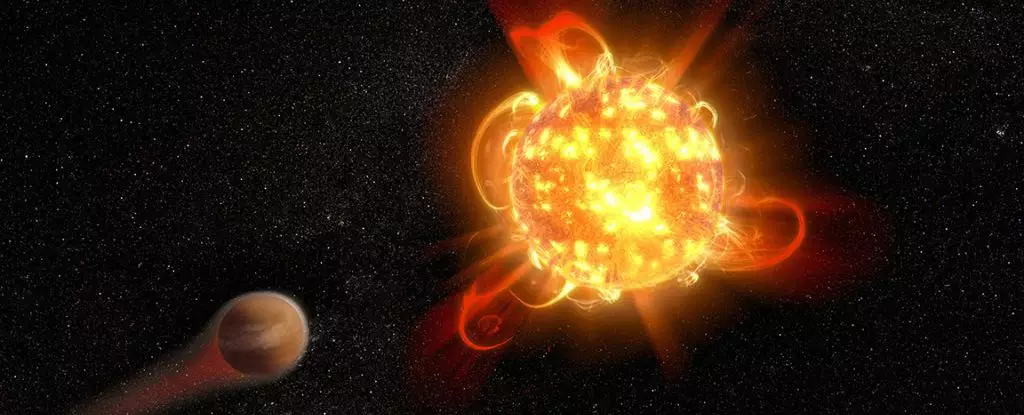M-class stars, commonly known as red dwarfs, represent the most abundant category of stars in our galaxy, making up approximately 70 percent of the Milky Way’s stellar population. While their relatively cooler temperatures and smaller sizes might suggest that these stars are less hostile than their more massive counterparts, recent research reveals a more complex picture. The combination of their stability, long lifespans, and the likelihood of rocky planets inhabiting the habitable zone has led scientists to consider red dwarfs as promising candidates for the search for extraterrestrial life. However, newfound evidence regarding their prolific production of solar flares brings into question the true nature of habitability in these systems.
The Nature of Red Dwarfs
Red dwarfs are characterized by their low surface temperatures, generally ranging from around 1,727°C to 3,227°C. These stars exhibit a slow burn, consuming their nuclear fuel over billions of years, which has been a boon for potential life-supporting planets that may orbit them. As a result, astrophysicists have often speculated that the surrounding environments of red dwarfs might offer the necessary conditions for life to emerge. Still, while they may appear to be tranquil celestial bodies, this characterization fails to consider a key piece of the puzzle: the frequent and intense stellar flares these stars produce.
Recent findings from a study analyzing data from the now-retired GALEX space telescope shine a bright light on the concerning behavior of red dwarf stellar flares. Researchers meticulously examined observations of around 300,000 stars, zeroing in on 182 distinct flares from M-class systems. This research went beyond earlier studies, which primarily investigated flares in optical wavelengths, instead focusing on ultraviolet (UV) radiation. The study reveals how these flares can emit powerful bursts of UV radiation that considerably exceed previously understood levels.
High-energy photons produced during stellar flares can assert both beneficial and detrimental impacts on planetary atmospheres. While mild doses may catalyze the formation of complex molecules essential for life, excessive irradiation poses catastrophic risks. Over time, significant doses of UV radiation could erode atmospheric layers, including crucial protective ozone, thus rendering planets inhabiting red dwarf systems increasingly inhospitable.
One of the most striking outcomes of the recent study is the debunking of traditional assumptions about the UV output from stellar flares. Prior research had modeled flare emissions as adhering to a blackbody spectrum with a temperature of around 8,727 degrees Celsius. However, the new analysis has revealed that the actual UV emissions from stellar flares often soared well beyond these expectations. Of the flares observed in the study, an astounding 98 percent surpassed the anticipated UV emissions predicted by the blackbody model. This significant deviation implies that the established understanding of how red dwarf flares behave requires urgent reevaluation.
Given the revelations regarding UV radiation levels emitted by red dwarf systems, the implications for habitability are profound. While planets existing within the habitable zone of red dwarfs may meet other criteria for supporting life—such as having stable climates and the presence of liquid water—the overwhelming emission of UV radiation could render them hostile environments. Consequently, red dwarfs may not be the safe havens for extraterrestrial life that previously speculatively assumed.
Researchers will need to consider the ramifications of these findings as they continue their quest to identify potential life beyond Earth. As they refine their search criteria, understanding the nature of red dwarf stars and the substantial danger posed by their flares becomes imperative.
While red dwarfs may appear to be discreet, gentle giants in the cosmos, new research suggests otherwise. The potential for life in these star systems may not be as promising as previously believed. Just as one must tread carefully in uncharted waters, scientists must now navigate the intricacies of red dwarf flares and their impact on planetary habitability. By doing so, they can enhance our understanding of life’s potential in the universe and perhaps reshape the narrative of our cosmic exploration.


Leave a Reply